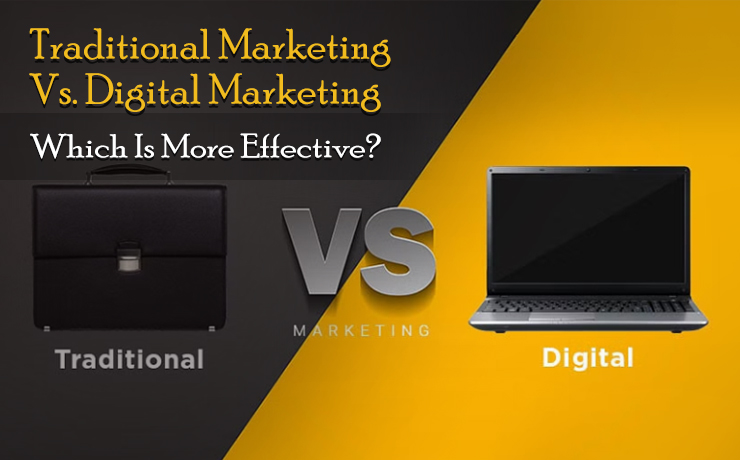Traditional Marketing Vs. Digital Marketing: Which Is More Effective?

Sam Chadson Ng
Director of Content

Marketing is like a game of chess; you want to make the right moves to reach your target audience and make a sale. But with so many options available, it can be tough to know which strategy to use. Should you go with the tried-and-true methods of traditional marketing, or the trendy new approach of digital marketing? In this article, we’ll compare traditional marketing and digital marketing and determine which is more effective for your business. Think of it like a showdown, a battle of the marketing giants, a war of the ads, if you will. So, grab some popcorn and let’s dive in!
Traditional Marketing
Traditional marketing refers to the use of traditional methods such as print advertisements, billboards, and TV commercials to promote products or services. These methods have been used for decades and are still considered effective today.
One of the main advantages of traditional marketing is that it reaches a wide audience. Print advertisements and billboards can be seen by many people, and TV commercials can reach millions of viewers. Traditional marketing methods also have a long shelf life. For example, a print advertisement can be kept and referred to multiple times, and a TV commercial can be recorded and watched later. Just like that old saying goes, “Out of sight, out of mind, unless it’s a billboard, then it’s in your face, all the time.”
Another advantage of traditional marketing is that it is often more cost-effective than digital marketing. Traditional methods of advertising, such as print advertisements and billboards, typically have lower production costs than digital methods. But let’s be real, have you seen the cost of a billboard in Times Square? It’s not cheap, but then again, neither is a Super Bowl commercial, so it’s all relative.
However, traditional marketing methods have some disadvantages. For example, traditional marketing methods can be costly, and it can be difficult to measure the effectiveness of traditional marketing campaigns. Plus, traditional marketing can be very hit or miss. Just because you put an ad in the newspaper, doesn’t mean that everyone who reads it will be interested in what you’re selling. It’s like trying to sell ice to Eskimos, it’s just not going to happen.
Digital Marketing
Digital marketing refers to the use of digital methods such as social media, email, and online advertising to promote products or services. These methods have become increasingly popular in recent years, and they are considered effective in reaching a larger audience.
One of the main advantages of digital marketing is that it can be highly targeted. For example, online advertisements can be targeted to specific demographics, such as age, location, and interests. This allows companies to reach their desired audience more effectively. Plus, with digital marketing, you can track the success of your campaigns in real-time. You can see how many people are clicking on your ad, how many are converting to customers, and even how much revenue you’re bringing in. It’s like having a crystal ball for your business, but way less creepy.
Another advantage of digital marketing is that it is often more cost-effective than traditional marketing. Digital methods of advertising typically have lower production costs than traditional methods. Plus, with digital marketing, you can start small and scale up as your budget allows. It’s like that old adage, “Don’t put all your eggs in one basket, unless you’re talking about digital marketing, then put all your eggs in that basket.” However, digital marketing methods also have some disadvantages. For example, digital marketing can be time-consuming, and it can be difficult to measure the effectiveness of digital marketing campaigns if you’re not using the right tools. Plus, with so many options available, it can be tough to know where to focus your efforts for the best results.
 Free
Consultation
Free
Consultation Free
Google Ads Audit
Free
Google Ads Audit







